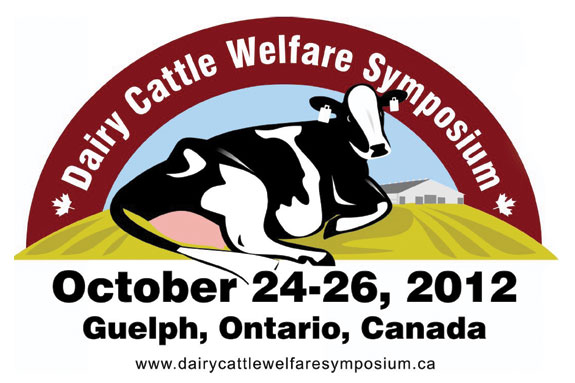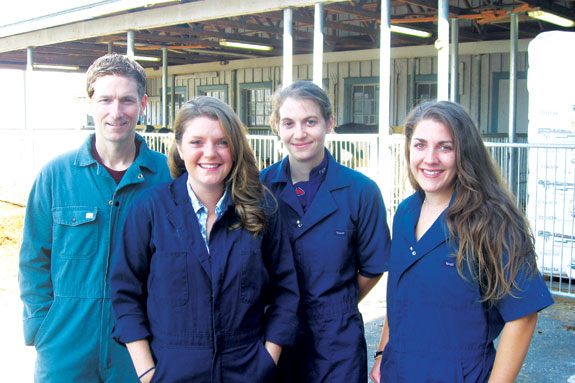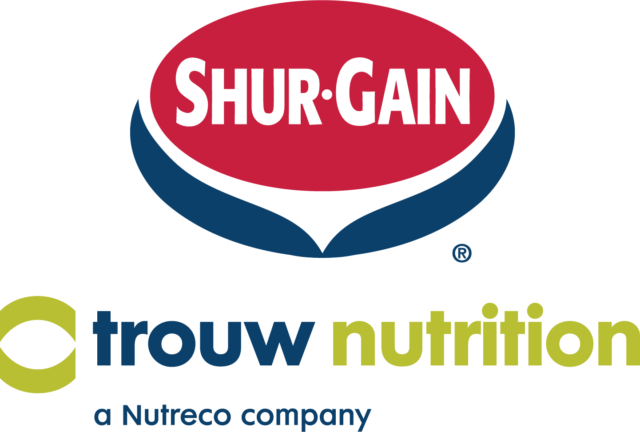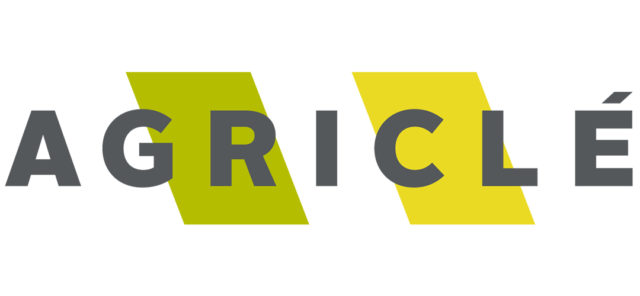
The dynamic program to be held Oct. 24-26 at the Delta Guelph Hotel and Conference Centre in Guelph, Ontario, will feature nationally and internationally renowned keynote speakers, multiple brief presentations of research reports, hands-on workshops, poster sessions, an exhibit area, a networking reception and a gala banquet.
The symposium will include dairy producers, researchers, veterinarians and other industry professionals from all over the world.
On Thursday afternoon, participants can choose to attend two interactive workshop sessions from a selection of four.
Each two-hour workshop offers the audience the opportunity to interact directly with renowned experts on these key topics that relate to everyday aspects of the dairy business.
With the use of aids, such as i-clickers, cadaver samples, videos and more, these active industry leaders will demonstrate and teach the latest information in an interactive setting. The topics have been chosen based on relevance to all in attendance. Read on to learn more about each presentation from its respective presenter.
 On-Farm Assessments to Improve Cow Comfort
On-Farm Assessments to Improve Cow Comfort
Dr. Derek Haley, assistant professor, Ontario Veterinary College, University of Guelph; Alexa Main, MSc. candidate in Epidemiology, University of Guelph; Marianne Villettaz Robichaud, Ph.D. candidate in Epidemiology, University of Guelph; and Clemence Nash, Ph.D. student in Epidemiology, University of Guelph
Q. Why is this topic important?
A. HALEY: Improving cow comfort is uniquely important in its own right, but it is also simply one of many ways with potential to enhance the overall efficiency and productivity of your dairy operation.
Like improving the genetics in your herd, or improving the feeding of your animals, improving cow comfort requires that you measure and assess specific things on your farm to detect when changes may be warranted.
Systematically monitoring cow comfort on an ongoing basis is essential to making continuous progress and improvements.
Q. What do you hope attendees will take away from your presentation?
A. HALEY: Attendees at this workshop will learn about the critical control points that are considered to most accurately reflect dairy cow welfare.
This workshop will focus on examining the cow’s immediate environment, as well as approaches to measuring aspects of the cow herself directly, including her behaviour.
Attendees will also get to practice different scoring systems and so learn about the advantages and disadvantages of different methods of monitoring.

Euthanasia of Dairy Cattle
Dr. Jan Shearer, professor and extension veterinarian at Iowa State University, Iowa
Q. Why is this topic important?
A. SHEARER: Despite our best attempts to relieve all suffering by medical or other means, we are faced with the simple reality that there are many conditions in animals, whether caused by injury or disease, that result in excruciating pain and/or horrible suffering that cannot be relieved by any other way than euthanasia.
Assuring a humane death is a moral obligation of all who are privileged to own or work with livestock.
Q. What do you hope attendees will take away from your presentation?
A. SHEARER: My hope is they will learn the proper methods for conducting euthanasia in cattle.
Specifically, I want them to know how to properly select the most appropriate firearm, ammunition and proper anatomical site for conducting these procedures.
I want them to know about the use of penetrating captive bolt and secondary steps to assure death. And finally, I want them to be aware of the complications associated with carcass disposal when animals are euthanized by barbiturate overdose.

Lameness: Lesions and Management
Dr. Gerard Cramer, veterinarian, Cramer Mobile Bovine Veterinary Services, Ontario; and Gerard (Jerry) McDowell, Canadian business manager, Zinpro Performance Minerals
Q. Why is this topic important?
A. RAMER: The topic is important as lameness is one of the most visible welfare concerns the dairy industry has.
With lameness prevalence rate around 20 to 30 percent worldwide and incidence rates much higher, the dairy industry needs to take a proactive, preventative approach to addressing the issue.
Q. What do you hope attendees will take away from your presentation?
A. RAMER: It is my hope that from the interactive workshop, attendees will have a greater sense of what can be done to develop a foot health program on a specific farm.
The workshop aims to be interactive using case presentations so attendees will have a chance to work through example herds to come up with a practical approach for the herd. This should give them a basis for working with their own herd or clients to address lameness.

Low-Stress Dairy Cattle Handling
Dr. Don Höglund, adjunct assistant professor, University of Minnesota and North Carolina State University – Colleges of Veterinary Medicine
Q. Why is this topic important?
A. HÖGLUND: Ensuring dairy cattle well-being is a veterinary responsibility that includes consideration for all aspects of livestock welfare including husbandry, nutrition, disease prevention and treatment, humane handling, behaviour management, and end-of-life decisions.
Behavioural responses are recognizable and pertinent indicators of observable animal well-being.
Veterinarians are uniquely positioned in the community to reinforce the science and practicality of efficient dairy cattle handling.
Q. What do you hope attendees will take away from your presentation?
A. HÖGLUND: Given the presentation the audience will understand that ensuring dairy cattle welfare is a veterinary and industry responsibility.
Attendees will learn how dairy cattle interpret and respond to their environment; how low-stress stock handling can be safely, efficiently and effectively applied in any facility. PD







